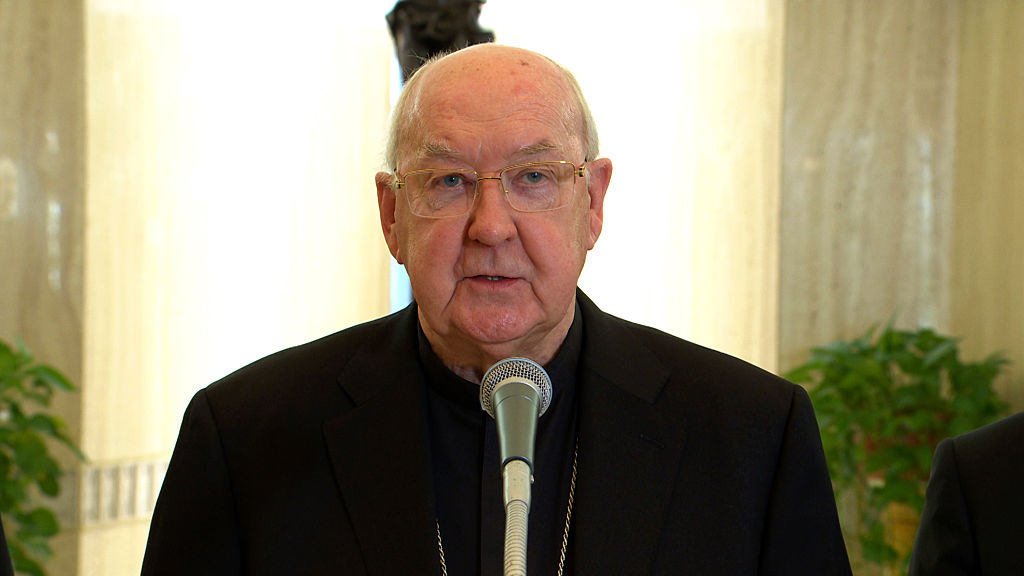Catholic Church Leadership: Navigating the Interregnum Period
The death or resignation of a Pope plunges the Catholic Church into an interregnum – a period between reigns. While seemingly a time of transition, it's a crucial phase demanding careful navigation of complex procedures and profound spiritual reflection. This period, far from being a void, is characterized by unique challenges and opportunities for the Church and its faithful. This article delves into the intricacies of this significant period in the Catholic Church's history.
Understanding the Interregnum: A Period of Waiting and Preparation
The Latin term "interregnum," meaning "between reigns," accurately describes the time between the death or resignation of a Pope and the election of his successor. It's a period governed by established protocols outlined in the Apostolic Constitution Universi Dominici Gregis, promulgated by Pope John Paul II in 1996. This document meticulously details the responsibilities of the College of Cardinals during this interim.
Key Responsibilities During the Interregnum:
-
Maintaining Church Governance: The Cardinal Camerlengo (Chamberlain) assumes many of the Pope's administrative duties. He oversees the Vatican City State, manages the Papal finances, and ensures the smooth functioning of the Church's administrative bodies. This is a period requiring strong leadership and decisive action, especially in dealing with urgent matters.
-
Preparing for the Conclave: The most critical task is preparing for the Papal conclave, the meeting of Cardinals to elect the new Pope. This involves coordinating logistics, ensuring security, and establishing the proper atmosphere for prayer and discernment. The Cardinal Camerlengo plays a vital role in this process.
-
Spiritual Guidance and Pastoral Care: While administrative duties are paramount, the interregnum is also a time of profound spiritual reflection for the Church. The cardinals and the faithful alike are called to prayer and contemplation, seeking guidance from the Holy Spirit in choosing the next leader of the Church. Pastoral care for the global flock remains a crucial priority.
The Significance of the Interregnum: More Than Just a Transition
The interregnum is not merely a procedural period; it holds significant theological and pastoral implications. It's a time of:
-
Prayer and Reflection: The absence of a visible head of the Church fosters a deeper sense of reliance on the Holy Spirit. The faithful are encouraged to pray for guidance and discernment, both for the cardinals and for the future of the Church.
-
Unity and Solidarity: The interregnum serves as a reminder of the Church's collective nature. Despite the absence of a visible leader, the Church continues to function, demonstrating its resilience and enduring unity under the guidance of the Holy Spirit.
-
Discernment and Deliberation: The conclave itself is a period of intense discernment and deliberation. Cardinals from around the world come together to pray, reflect, and engage in a deeply spiritual process of selecting the most suitable candidate to lead the Church. This process highlights the importance of collegiality and shared responsibility within the Church.
Challenges and Opportunities of the Interregnum:
The interregnum period, while structured, presents unique challenges:
-
Maintaining Stability: The sudden absence of a Pope can lead to uncertainty and anxiety among the faithful. Maintaining stability and confidence requires strong communication and clear leadership from the Cardinal Camerlengo and other key figures within the Church hierarchy.
-
Navigating Global Issues: The Church faces numerous global challenges, from social justice issues to political conflicts. During the interregnum, these challenges must still be addressed, requiring careful coordination and proactive leadership.
-
Ensuring a Smooth Transition: The success of the interregnum depends on a smooth and efficient transition to the new papacy. This necessitates effective planning, careful execution of protocols, and clear communication with the global Church.
However, the interregnum also presents opportunities:
-
Renewal and Re-evaluation: The period can foster a deeper sense of reflection on the Church's mission and priorities. It provides an opportunity to re-evaluate current practices and consider new approaches to challenges.
-
Increased Prayer and Spirituality: The absence of a visible leader can heighten the focus on prayer and spiritual reflection among both clergy and laity.
-
Strengthening Community: The shared experience of the interregnum can foster a stronger sense of community and unity among Catholics worldwide.
Conclusion: A Time of Transition, a Time of Grace
The interregnum in the Catholic Church is a unique and complex period. It's a time of transition, yes, but it's also a time of profound spiritual reflection, prayer, and preparation for the future. Understanding the procedures, responsibilities, and significance of this period is crucial for both clergy and laity alike. Through prayer, discernment, and collaborative effort, the Church navigates this phase, ultimately emerging stronger and more unified in its mission to proclaim the Gospel of Jesus Christ.
